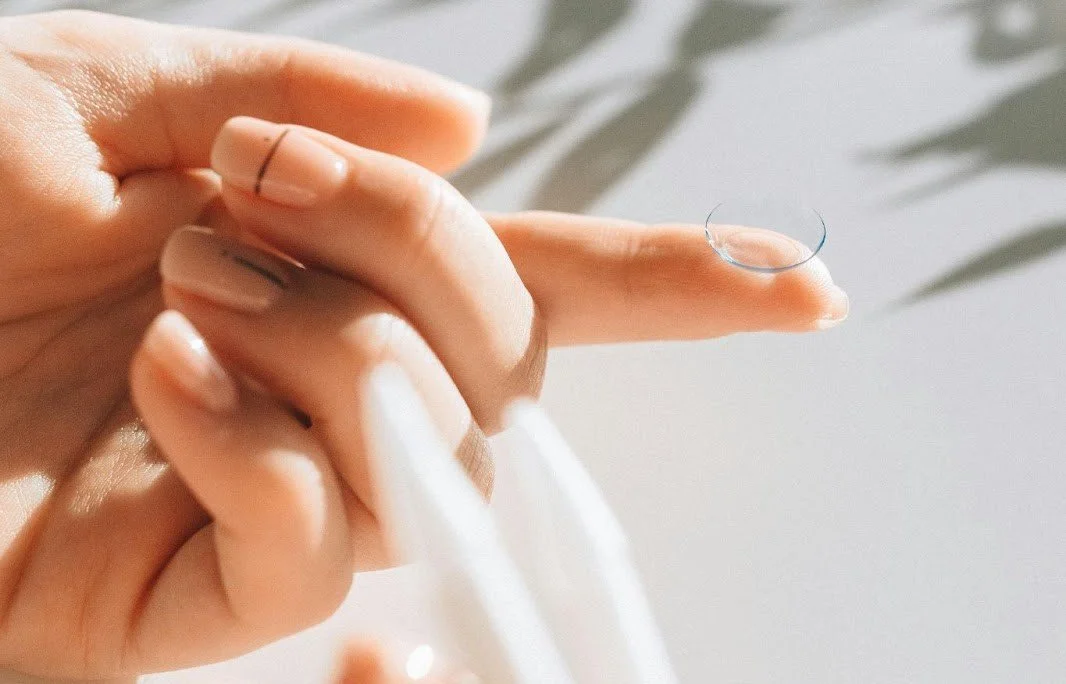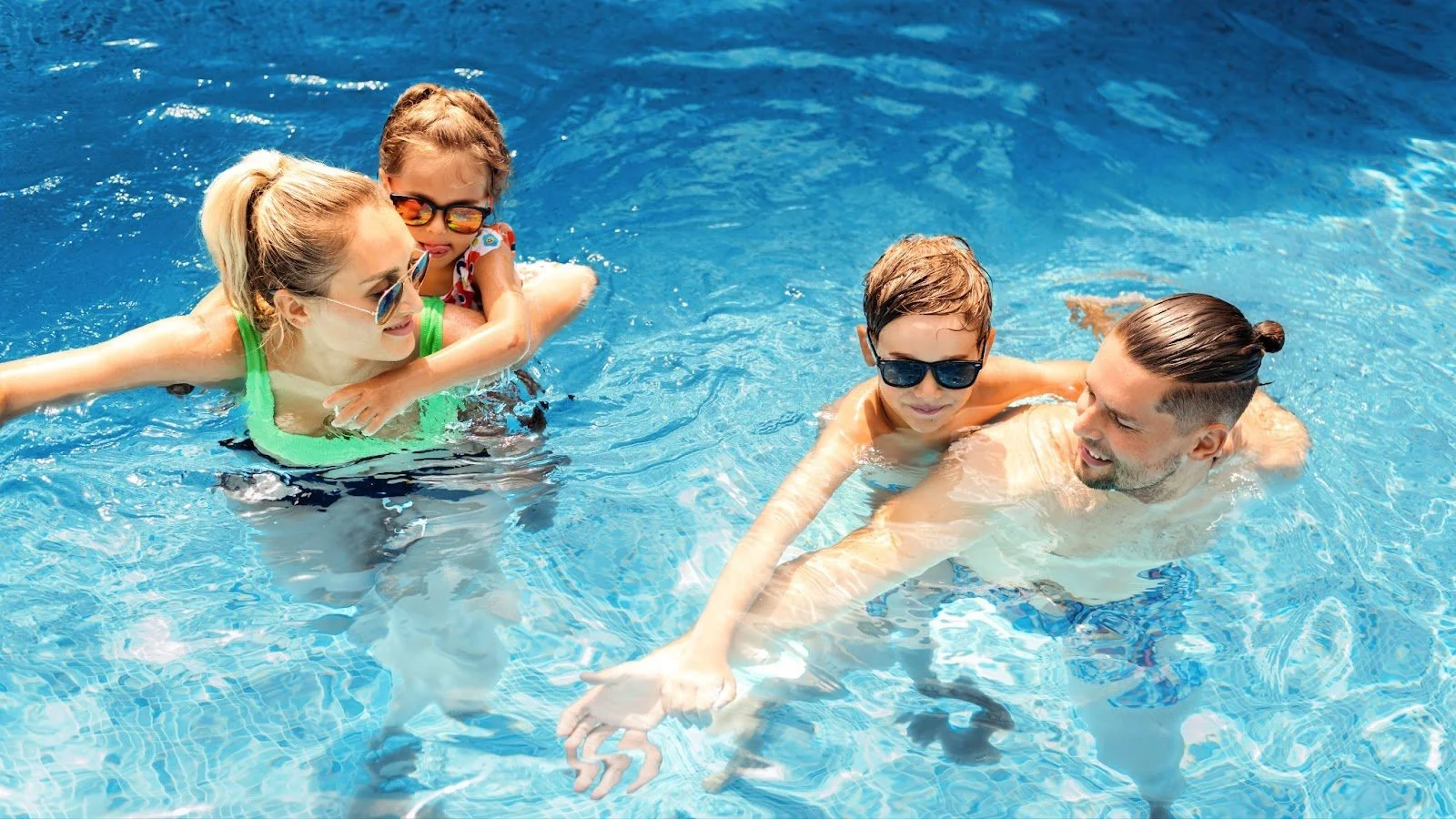Can You Swim with Contact Lenses? Here’s What You Need to Know
There’s nothing quite like a refreshing swim on a hot day—but if you’re one of the millions of Australians who wear contact lenses, you might have wondered: Is it actually safe to swim with them in? It’s a fair question, especially when you’re off to the beach or the local pool without your glasses.
The truth is, swimming with contact lenses can put your eye health at serious risk. Before you dive in, it’s worth understanding why water and lenses don’t mix, and what safer options you have to keep your vision clear. If you're unsure what contact lenses suit your lifestyle, it's always best to start with a professional contact lens fitting tailored to your specific needs.
Let’s take a closer look at what our trusted Australian optometrists, with their wealth of knowledge and experience, advise—and what you should do instead to protect your eyes.
Is It Safe to Swim with Contact Lenses?
What Australian Optometrists Say
Optometrists across Australia, including experts from Optometry Australia and government health resources like Healthy WA, agree on one thing: it is not safe to swim with contact lenses. Not even occasionally.
The main concern is infection. Your eyes are highly sensitive, and contact lenses can trap harmful microorganisms that live in all types of water—whether you're splashing about in the pool, swimming in the ocean, or even rinsing your face in the shower. And the risk doesn’t stop there; chemical exposure from chlorine and other pool disinfectants can also damage both your lenses and your eyes.
Why Water and Contact Lenses Don’t Mix
Water—yes, even clean-looking water—can carry bacteria, fungi, and parasites that don’t belong anywhere near your eyes. When contact lenses are exposed to water, they can absorb these pathogens and allow them to come into contact with your cornea. This creates the perfect environment for irritation, infection, or even worse complications.
It’s not just about germs, either. Chlorine can bind to your lenses, altering their shape and reducing oxygen flow to your eye. This can lead to discomfort and increased risk of corneal damage.
Understanding the Risks
Acanthamoeba Keratitis
You’ve probably never heard of Acanthamoeba keratitis—and hopefully, you never will experience it. Acanthamoeba is a type of microscopic organism found in water, and if it gets trapped under your contact lens, it can infect the cornea. Although rare, this infection is extremely serious and potentially blinding if not treated promptly. This underscores the critical importance of preventing such infections.
Contact lens wearers are particularly vulnerable because the lenses create a warm, moist space that encourages bacteria to grow. It doesn’t take much—just a quick swim or accidental splash—to put you at risk.
Other Infections & Eye Damage
Besides Acanthamoeba, other culprits include:
Bacterial conjunctivitis (pink eye)
Lens displacement or loss
The scary part? These issues may not appear immediately. You could swim in the morning and only notice redness, irritation, or blurred vision later that evening—or even the next day.
Are Any Contact Lenses Safer for Swimming?
Daily Disposables – Lower Risk, Not Risk-Free
You might’ve heard that daily disposable lenses are a safer bet. That’s partly true.
Because they’re thrown out after each use, daily disposables reduce long-term exposure to bacteria. However, and this is a significant caveat, they still absorb water and can trap harmful microorganisms. If you must wear lenses near water (say, for a quick dip), you should discard them immediately afterwards and avoid reusing them under any circumstances.
Hard (RGP) vs Soft Lenses in Water
Soft lenses are more porous and absorb water more easily, which means they also absorb bacteria and chemicals. Rigid Gas Permeable (RGP) lenses are less absorbent but are more likely to fall out during active swimming or diving.
Neither option is recommended, but if you’re ever in a position where swimming with lenses is unavoidable, speak with your optometrist about which type poses the least risk.
Safer Alternatives for Clear Vision in Water
Prescription Swim Goggles
Here’s the best alternative: invest in a pair of prescription swim goggles. These provide full protection against water while allowing you to maintain clear vision underwater. They’re custom-made to match your prescription and are available through most optometry practices in Australia.
Prescription goggles are a smart, one-time investment that removes the guesswork (and risk) of swimming with contact lenses.
Swimming Without Visual Correction
If your prescription is mild and you can safely get by without visual correction, this is your safest option. Going without any lenses eliminates the risk of infection.
You can always wear regular swim goggles to protect your eyes and prevent water from getting in.
What to Do If You Accidentally Swim with Contacts
So, you’ve already taken a dip with your lenses in—what now? Don’t panic, but act quickly.
Immediate Actions
Remove your contact lenses immediately – don’t wait until you’re home.
If you’re wearing daily disposables, dispose of them immediately.
If you use reusable lenses, clean and disinfect them thoroughly using a proper solution—never tap water.
Rinse your eyes with sterile saline or artificial tears to help flush out potential irritants.
While a single exposure might not always lead to infection, the longer contaminated lenses stay in your eyes, the higher the risk becomes.
Watch for Symptoms
After swimming with contact lenses, monitor your eyes closely for the next 24 to 72 hours. If you notice any of the following symptoms, book an appointment with your optometrist immediately:
Redness or irritation
Pain or discomfort
Blurred vision
Sensitivity to light
Excessive tearing or a gritty sensation
Early treatment is crucial to prevent long-term damage, particularly in cases of infections such as Acanthamoeba keratitis.
Eye Safety Tips from Australian Optometrists
To keep your eyes healthy and your vision clear, Australian optometrists recommend these simple yet crucial habits:
Never rinse or store your lenses in tap water; always use an approved contact lens solution.
Avoid wearing lenses in showers, spas, or while at the beach.
Follow the recommended wearing schedule and dispose of your lenses as directed.
Regular eye checks are a crucial part of maintaining your eye health, especially if you wear contact lenses. By ensuring your lenses are still suitable and safe for you, you can have peace of mind about your eye health.
Following these best practices can make a significant difference, especially if you lead an active lifestyle or travel frequently.
Safe Swimming for Children Who Wear Contacts
Children are naturally more active—and less mindful—when it comes to hygiene. That’s why swimming with contacts is even riskier for young lens wearers.
Here’s what’s recommended:
Avoid contacts altogether during water activities.
Encourage your child to wear prescription swim goggles instead.
Supervise swimming sessions and remind them not to rub their eyes underwater.
Use this as an opportunity to educate them on healthy eye care habits from an early age.
Children with vision correction needs can still enjoy the pool safely with the right gear and a little guidance.
Bottom Line – What You Need to Know
Let’s recap the essentials:
Swimming with contact lenses puts your eyes at unnecessary risk of serious infections and long-term damage.
Even a single swim can lead to complications such as Acanthamoeba keratitis or corneal ulcers.
Safer alternatives, such as prescription swim goggles or simply swimming without lenses, are widely available.
Practising good contact lens hygiene and scheduling regular eye exams helps protect your vision all year round.
For more advice tailored to your situation, feel free to explore your options with our optometrists at Eye Concepts. We’re here to help you see clearly—and safely—whether you’re at the beach, in the pool, or just out enjoying the sunshine.
Frequently Asked Questions (FAQs)
Can I swim once with contact lenses?
Even once is risky. Bacteria and microbes don’t need repeated exposure—they only need one opportunity to cause an infection.
What if I wear goggles over contacts?
Standard goggles may reduce the risk slightly, but they don’t fully seal out water. If you’re set on swimming with clear vision, opt for prescription goggles instead.
Can I shower with contacts?
No. Tap water is not sterile and may contain organisms harmful to your eyes. Always remove lenses before showering.
What are the signs of Acanthamoeba keratitis?
Common signs include eye redness, pain, light sensitivity, blurred vision, and a feeling of something in your eye. If any of these occur, seek help from your optometrist immediately.
Ready to Protect Your Eyes This Summer?
Whether you’re swimming laps or heading to the beach, your eyes deserve the best care. Book an eye test or consultation with our team to explore the safest options for your active lifestyle. You’ll thank yourself later.
See clearly, swim safely. Always.


